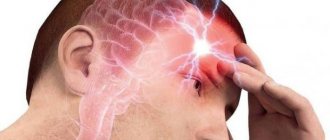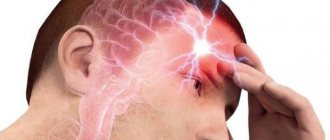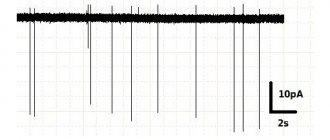Vegetative-vascular dystonia is a symptom complex that develops through the interaction of a large number of factors, is characterized by autonomic dysfunction of the heart and cardiovascular system, and entails a disorder in the functioning of internal organs. Even healthy people have periods in their lives when, without changing their lifestyle, they become more tired, suffer from insomnia, and become lethargic or irritable. If the causes of unpleasant symptoms are vitamin deficiency, stress, overwork, after rest and vitamin therapy you feel better. But this is how the first signs of vegetative-vascular dystonia make themselves felt. Vegetative-vascular dystonia is a serious disorder in the functioning of the body; it is a malfunction in the functioning of all body systems. First of all, the autonomic nervous system suffers - it is responsible for the regulation of blood pressure, the functioning of the respiratory tract, the production of hormones, the activity of the genitourinary system, and in general the normal rhythm of human life depends on the work of the autonomic nervous system. Most often, vegetative-vascular dystonia is observed in schoolchildren aged 7-8 years and in adolescents, and in girls more often than in boys. But to one degree or another, it is also recorded in adults.
Why does vegetative-vascular dystonia (VSD) develop?
VSD is a pathological condition caused by increased excitability of the central nervous system (CNS). The fundamental factors in the occurrence of symptoms of autonomic dysfunction syndrome include hereditary disorders of the structure and functions of the nervous system and psychotraumatic factors, such as:
- chronic fatigue;
- stress, emotional overload;
- mental and physical stress;
- weather sensitivity.
However, symptoms of VSD can also be caused by the following reasons:
- previous neurological, endocrine and somatic diseases;
- allergy;
- abnormalities of body structure;
- unfavorable environmental conditions;
- climatic and meteorological conditions;
- physical inactivity;
- physiological hormonal changes;
- unbalanced diet and other factors.
Age-related characteristics play an important role in the occurrence of symptoms of VSD. Thus, in adolescence, the cause of unpleasant sensations is the uneven pace of development of individual organs and the parts of the autonomic nervous system that innervate them.
Thus, the symptoms of autonomic dysfunction are caused by changes in the activity of the sympathetic and parasympathetic systems. This, in turn, leads to excessive production of a number of biologically active substances and hormonal imbalance.
Causes
The development of vegetative-vascular dystonia in young children can be caused by pathology of the perinatal period (intrauterine fetal hypoxia), birth injuries, and diseases of the newborn period. These factors negatively affect the formation of the somatic and autonomic nervous systems and the usefulness of the functions they perform. Autonomic dysfunction in such children is manifested by digestive disorders (frequent regurgitation, flatulence, unstable stool, poor appetite), emotional imbalance (increased conflict, moodiness), and a tendency to colds. During puberty, the development of internal organs and the growth of the body as a whole outpaces the development of neuroendocrine regulation, which leads to worsening autonomic dysfunction. At this age, vegetative-vascular dystonia is manifested by pain in the heart, irregularities and palpitations, lability of blood pressure, psychoneurological disorders (increased fatigue, decreased memory and attention, short temper, high anxiety, irritability). Vegetative-vascular dystonia occurs in 12-29% of children and adolescents. In adult patients, the occurrence of vegetative-vascular dystonia can be provoked and aggravated due to the influence of chronic diseases, depression, stress, neuroses, traumatic brain injuries and injuries to the cervical spine, endocrine diseases, gastrointestinal pathologies, hormonal changes (pregnancy, menopause). At any age, a risk factor for the development of vegetative-vascular dystonia is constitutional heredity.
Types of vegetative-vascular dystonia
Depending on which autonomic disorder predominates, VSD is conventionally divided into the following types:
- cardiac
– cardiac disorders; - hypotonic
– a functional disorder characterized by a decrease in blood pressure and a weakening of vascular tone; - hypertensive
– a syndrome manifested by high blood pressure; - vagotonic
– an autonomic disorder associated with disruption of the vagus nerve; - mixed
- combining two or more of the listed types.
Treatment
Treatment of vegetative-vascular dystonia should begin with the organization of the correct daily routine and a set of restorative measures, which, if used regularly, give an excellent therapeutic and healing effect: The duration of continuous night sleep should be at least 8-9 hours, in addition, it is advisable to rest, if possible, several hours during the day. Physical activity should be regular and moderate, until you feel slightly tired, especially with high blood pressure (above 140/90 mm Hg). Swimming, cycling, light running (excluding jumping), walking, aerobics, and skiing are useful. Massage of the head, collar area and back, in the absence of contraindications and after consultation with a doctor, gives a good therapeutic effect. Daily contrast showers and exposure to sunlight (phototherapy) are very useful. Nutrition for VSD should be balanced and contain the physiologically necessary amount of fats, carbohydrates, proteins, vitamins and microelements; potassium and magnesium are especially necessary in the diet. Potassium is found in tomatoes, potatoes, cabbage, green peas, beets, eggplants, beans, sorrel, dill, rhubarb, apricots, prunes, figs, and raisins. Sources of magnesium can be nuts, beans, soybeans, carrots, rose hips and whole grain porridges (buckwheat, oatmeal, wheat). Salty, spicy, smoked dishes, strong tea, coffee, chocolate should be excluded from the menu as much as possible, and animal fats should be replaced with vegetable fats. If normalization of the regime and nutrition do not give the desired effect, doctors have many modern effective drugs in their arsenal:
- antihypertensive drugs (lowering blood pressure),
- beta blockers (for tachycardia),
- neuroprotectors (activators of brain metabolism),
- antioxidants (protect cells from oxidation and destruction),
- drugs to improve blood circulation,
- tranquilizers (having a calming effect),
- Antidepressants to help relieve depression and anxiety.
If the causes of dystonia are psychological disorders (stress, depression, chronic fatigue, neurosis, overwork), in addition to medications, it is advisable to visit a professional psychotherapist who, using established techniques such as hypnotherapy or behavioral therapy, will help get rid of fears, panic attacks and phobias and provide the necessary psychological assistance.
Symptoms of vegetative-vascular dystonia
The main symptoms of VSD depend on the functional state of the central and peripheral nervous systems, as well as the nature of autonomic disorders.
When VSD occurs with a disorder of the cardiovascular system, bursting, stabbing or aching pain appears in the heart area, an acceleration or deceleration of the heart rate, extrasystole (untimely contraction of the heart or its individual chambers), arrhythmia, and increased sweating are observed.
The list of symptoms of hypotonic VSD includes pallor of the skin, decreased blood pressure, weakness, chills, a feeling of lack of air, shallow breathing, and disruption of the digestive tract.
In disorders of the hypertensive type, the following manifestations of VSD are observed: frequent headaches, increased anxiety, an inexplicable feeling of fear, loss of appetite, nausea, impaired coordination of movements, a feeling of a veil or flashing spots before the eyes, excessive sweating.
People suffering from vagotonia experience decreased performance, increased fatigue and anxiety, apathy, sleep disturbances, and a tendency to develop depression. In addition, unpleasant sensations such as constant dizziness, causeless abdominal pain, night pain in the legs, intolerance to heat and cold, frequent urge to urinate, increased salivation, and constipation may occur.
Mixed type autonomic dysfunction is the most common form of VSD and is accompanied by signs characteristic of a variety of types of vegetative-vascular disorders. However, there are also specific symptoms of VSD that are unique to this condition: phobias, panic attacks, unreasonable fear of death, shortness of breath syndrome, chest pain, heart rhythm disturbances, drowsiness.
Due to the wide variety of manifestations of VSD, when choosing treatment tactics, specialists first of all pay attention to well-being and analyze complaints that make it possible to clarify the nature of the autonomic disorder.
Vegetative-vascular dystonia: symptoms, diagnosis, treatment
Are you worried about pain in the heart area? Having trouble taking a breath? Feeling dizzy? Are your hands shaking and your stomach churning?
Neither an ECG, nor an MRI, nor all kinds of tests revealed any serious pathology. Is the patient really a malingerer?
Not at all. Everything he feels is real. The disorder that we will discuss today has more than a hundred manifestations. However, often (not always, but often) an attempt to find its “material” basis is unsuccessful.
With questions about what vegetative-vascular dystonia is and how to treat it, we went to see a neurologist, leading specialist in the neurology department of the Expert Clinic Kursk, Natalya Vladimirovna Umerenkova.
- Natalya Vladimirovna, many have heard the name “vegetative-vascular dystonia”. But does such a diagnosis really exist from the point of view of world medicine?
No. This formulation is found exclusively in the post-Soviet space. Of course, this does not mean that patients are making up their complaints - they are very real. However, formally, in the form of a diagnosis, VSD does not exist.
Does osteochondrosis exist? Radiologist at MRI Expert Elets says:
Yavorsky Evgeniy Valerievich
- What symptoms are they talking about when they mean vegetative-vascular dystonia?
Figuratively speaking, it is probably easier to name signs that do not occur in vegetative-vascular dystonia.
Essentially speaking, there are about 150 manifestations that may indicate the presence of VSD.
Conventionally, they can be divided into symptoms from the cardiovascular system (lowering or increasing blood pressure, discomfort or pain in the heart area, a feeling of “interruptions” in the heart, a feeling of tightness in the chest, headaches, dizziness), the respiratory system (a feeling of lack of air, inadequate inhalation or exhalation).
It's off scale! We are looking for the causes of high blood pressure. Read here
Numbness of the skin around the mouth also occurs; numbness and coldness of the hands and feet; general weakness, lethargy, fatigue; increased sweating; a slight increase in body temperature (slightly above 37°C), which cannot be explained by any other disease; urination and sexual dysfunction. From the gastrointestinal tract, pain, nausea, impaired intestinal motor function, and a feeling of “fullness” in the upper abdomen may be observed.
- What diseases can be hidden under what is called vegetative-vascular dystonia?
Variety. This may be coronary heart disease, hypertension, pathologies of the thyroid gland in the form of weakening or strengthening of its function, problems of the digestive system (gastritis, biliary dyskinesia), organic damage to the central nervous system (pathology of the hypothalamus), diseases of the adrenal glands, diseases of the urinary tract (cystitis). ), neurotic and psychotic disorders and others.
What is hypothyroidism of the thyroid gland? The endocrinologist at the Expert Clinic Borisoglebsk, Olga Arkadyevna Kalinina, tells
- Neurocirculatory dystonia and vegetative-vascular dystonia - are they the same thing or different?
Yes, VSD and NDC are, in principle, the same thing.
- What should a patient do if the doctor said that he has “vegetative-vascular dystonia”: look further for a diagnosis or live with VSD?
Depends on whether the patient has already been examined before or not. Vegetative-vascular dystonia is, as a rule, not a “first appointment” diagnosis. As we already know, this formulation may hide very real ailments. Therefore, a full examination of the patient is necessary to exclude these diagnoses. And if after this no existing diagnosis can be established - due to the lack of sufficient criteria - we can talk about the presence of autonomic disorders.
It hurts, but there is no diagnosis. Read here
- What are the reasons for the development of vegetative-vascular dystonia? What causes this condition?
The autonomic nervous system consists of two large divisions - sympathetic and parasympathetic. Without going into details, we can say that the “directions” of these two systems are opposite, i.e. they have an antagonistic effect on various body functions. Normally, they are in a state of equilibrium with respect to each other.
In some situations (for example, chronic disease, intoxication, etc.), the “coherence” of the work of these departments is disrupted. Often the sympathetic nervous system begins to predominate (it is more variable and sensitive). In response to some excess load, a disproportionate response of this department occurs in the form of excessive reactions, symptoms that are regarded by the patient as abnormal and frightening.
In addition, this complex involves the hypothalamus and the so-called limbic system (it is responsible, in particular, for emotions), which perform a kind of integrating function. When the functions of this complex are disrupted, the result is something resembling an “orchestra without a conductor,” i.e. each participant begins to function in his own way. In other words, normally, when the patient might not feel, say, certain fluctuations in blood pressure, in conditions of vegetative imbalance it begins to be perceived differently, sometimes with emotional “coloring” (fear, anxiety).
- Natalya Vladimirovna, how is vegetative-vascular dystonia confirmed or refuted? What diagnostics should a patient with suspected VSD undergo?
It depends on the type of complaint. If, for example, this is a rapid heartbeat or “interruptions” in the work of the heart, fluctuations in blood pressure, then a set of studies will be appropriate, i.e. this could be an ECG, Holter monitoring, echocardiography, a certain set of laboratory tests (clinical blood test, urine test, study of thyroid hormones).
If there are complaints from the respiratory system, fluorography, examination of external respiration function, and some tests will be advisable.
Why are x-rays dangerous? Yulia Aleksandrovna Rutskaya, head of the radiology department of the Expert Clinic Kursk, tells
If there are manifestations from the gastrointestinal tract, then these are endoscopic studies (gastroduodenofibroscopy, colonoscopy, ultrasound of the abdominal organs, a number of biochemical blood tests).
Where can I find the courage to make up my mind? Gastroscopy – WITHOUT fear! Read here
If there are signs of a possible pathology of the urinary system, an ultrasound of the kidneys and bladder, a general urine test, a biochemical blood test with determination, in particular, of urea, creatinine, etc. are prescribed.
Some patients may be prescribed a consultation with a psychotherapist - for example, when a doctor, during a conversation with a patient, discovers that complaints are “blurred”, when they are difficult to attribute to a particular area or system of the body. Diseases in which complaints and other manifestations affect many systems certainly exist, but a connection between the subjective feeling of malaise exclusively and the psyche cannot be ruled out. Therefore, an examination by a psychotherapist may be required; there is nothing wrong with that.
- What specialty does the doctor treat the symptoms of VSD?
This is the competence of a neurologist and psychotherapist, and, if necessary, a psychiatrist.
You can make an appointment with a neurologist here
Please note: the service is not available in all cities
- What are the principles of treatment of vegetative-vascular dystonia?
You should always remember that VSD is a benign disorder that can be eliminated by optimizing your lifestyle, proper work and rest schedule, and sufficient sleep. To eliminate its manifestations, medications of various classes are used - in particular, some types of antidepressants and anti-anxiety drugs. Treatment is often complemented by psychotherapy, which in some cases is the main type of treatment.
For reference:
In 2004 she graduated from Kursk State Medical University.
In 2004-2005, she completed an internship in neurology at the above-mentioned university.
Since 2015, he has been working at Clinic Expert Kursk LLC, and is a leading specialist in the neurology department.
Treatment of vegetative-vascular dystonia
Treatment of VSD is carried out in a complex, including drug therapy. Today, an effective drug that can act directly on the cause of vegetative-vascular disorders is Eltacin® .
This modern drug from the group of biological antioxidants contains three amino acids (glycine, glutamic acid and cystine). By interacting, they promote the production of glutathione. This compound, which is key in the body's antioxidant defense, normalizes the redox balance and improves the functional state of the autonomic nervous system.










